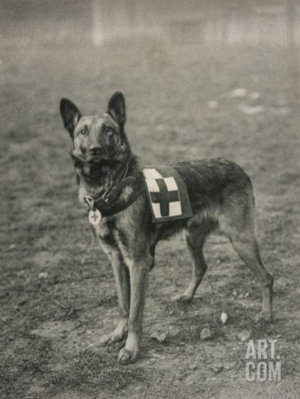
When 81 Navy SEALs descended on Osama Bin Laden’s compound on May 2, 2011, only one name of a member of SEAL Team Six was released: “Cairo,” a Belgian Malinois. For many people outside the dog world, it was the first time they’d ever heard of this breed, but that was their “bad.” The breed has been around for awhile, as evidenced in this photo at the left of a Belgian Malinois who was a World War I “Ambulance” or Red Cross Dog in 1915. These dogs were trained to find live casualties on the battlefield, and then perform a “re-find” for their handler. Fast forward to Cairo who not only helped secure the perimeter of Bin Laden’s compound, but was instrumental in his capture, and you see a trend.
The Malinois, one of the breeds that started patrolling outside the White House gates not long ago (the first time canine agents were deployed by the Secret Service among the general public), has been working with the Secret Service since 1976 when it used to stop suicide bombers. These dogs train for 20 weeks before they start working, and then do eight hours a week of retraining for the rest of their professional lives.
Former Navy SEAL Mike Ritland, who now trains dogs for U.S. Special Forces, wrote about training Malinois in his book “Trident K9 Warriors.” The 200-step training program the military uses costs $50,000 per dog, but the investment pays off because according to Ritland, the dogs have an 80 percent success rate detecting explosives, much better than humans or machines. They can also be trained to find narcotics. Chasing people down is also another thing these dogs do best. “A Marine might not be able to catch someone, but the dogs will,” said one soldier.
